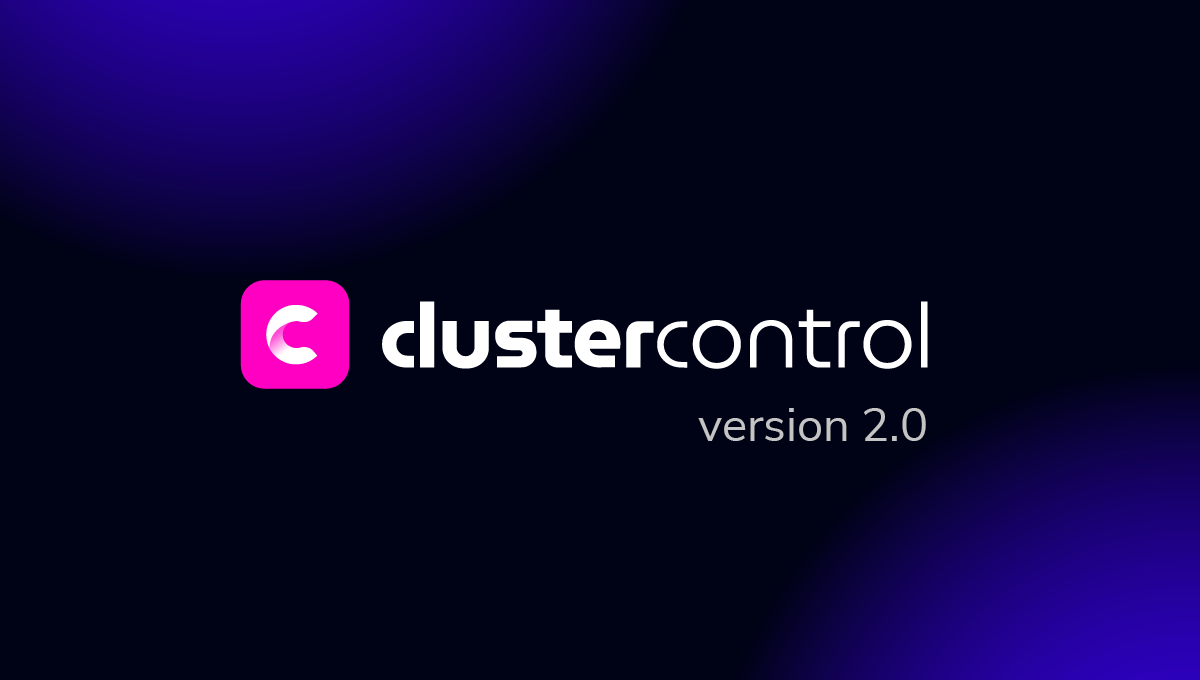blog
Command Line Aficionados: Introducing s9s for ClusterControl

Easily Integrate ClusterControl With Your Existing DevOps Tools via s9s – Our New Command Line Interface
We’ve heard your call (and, selfishly, our own): please meet s9s – the new command line interface (CLI) for ClusterControl, our all-inclusive open source database management system.
At every conference we’ve attended so far, visitors have been asking us whether there is a command line interface for ClusterControl. And, we’re not afraid to admit, some of us at Severalnines have always wanted to have one as well. So those same colleagues have gone and created the s9s CLI for ClusterControl, which we’re happy to present today.
In fact, Johan Andersson, our CTO, is one of our command line aficionados and he describes the new CLI as follows:
What’s the ClusterControl CLI all About?
The ClusterControl CLI, is an open source project and optional package introduced with ClusterControl version 1.4.1. It is a command line tool to interact, control and manage your entire database infrastructure using ClusterControl. The s9s command line project is open source and is located on GitHub.
The ClusterControl CLI opens a new door for cluster automation where you can easily integrate it with existing deployment automation tools like Ansible, Puppet, Chef or Salt. This allows you to easily integrate scripts from your orchestration tools inside the CLI.
Users who have downloaded ClusterControl can use the CLI for all the ClusterControl features while they’re on the Enterprise trial of ClusterControl. Community users can then use the deployment and monitoring functionalities of ClusterControl. Existing customers can use the CLI to the full extent of ClusterControl.
Usage and Installation
The CLI can be installed by adding the s9s tools repository and using a package manager, as well as be compiled from source. The current installation script to install ClusterControl, install-cc, will automatically install the command line client. The command line client can also be installed on another computer or workstation for remote management. Finally, the CLI requires ClusterControl 1.4.1 or later.
Moreover, all communication between the client and the controller is encrypted and secured using TLS.
The ClusterControl CLI allows you to deploy and manage open source databases and load balancers in a way that is fully integrated and aligned with the ClusterControl core and GUI.
The s9s command line project is open source and located on GitHub: https://github.com/severalnines/s9s-tools
For examples and additional information, e.g, how to setup users and authentication, please visit
https://staging1.severalnines.com/docs/components.html#clustercontrol-cli
Before you get started, you need to have ClusterControl version 1.4.1 or later installed, see https://staging1.severalnines.com/download-clustercontrol-database-management-system

Some of the Things you can do From the CLI in ClusterControl
- Deploy and manage database clusters
- MySQL
- PostgreSQL
- MongoDB to be added soon
- Monitor your databases
- Status of nodes and clusters
- Cluster properties can be extracted
- Gives detailed enough information about your clusters
- Manage your systems and integrate with DevOps tools
- Create, stop or start clusters
- Add, remove, or restart nodes in the cluster
- Create database users (CREATE USER, GRANT privileges to user)
- Users created in the CLI are traceable through the system
- Create load balancers (HAProxy, ProxySQL)
- Create and Restore backups
- Use maintenance mode
- Conduct configuration changes of db nodes
- Integrate with existing deployment automation
- Ansible, Puppet, Chef or Salt, …
Actions you take from the CLI will be visible in the ClusterControl Web UI and vice versa.

How to Contribute
The CLI project (aka s9s-tools) can be accessed via GitHub. We encourage users to contribute to the project by:
- Trying out the CLI and give us feedback
- Letting us know about missing features, wishes, or problems by opening issues on GitHub
- Contributing patches to the project
To sum Things up
The ClusterControl CLI and GUI are fully integrated and synced to allow you to utilize the CLI for deployment and management of your databases and load balancers, whilst using the advanced graphs in the GUI for monitoring and troubleshooting. The CLI offers detailed information about node stats and cluster stats, enabling scripts and other tools to benefit from those.
In our experience, System Administrators and DevOps professionals are the mostly likely to benefit from a CLI for ClusterControl as they are accustomed to using scripts to perform their daily tasks.
Happy command-line-clustering!



